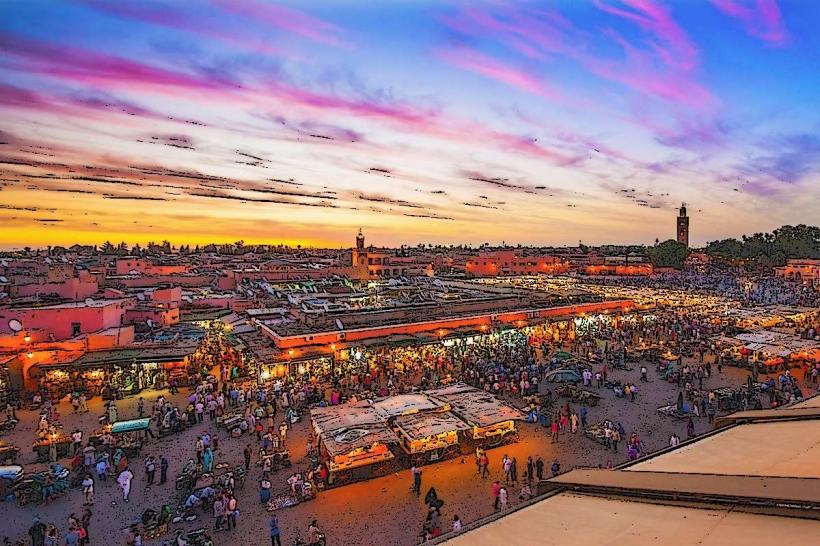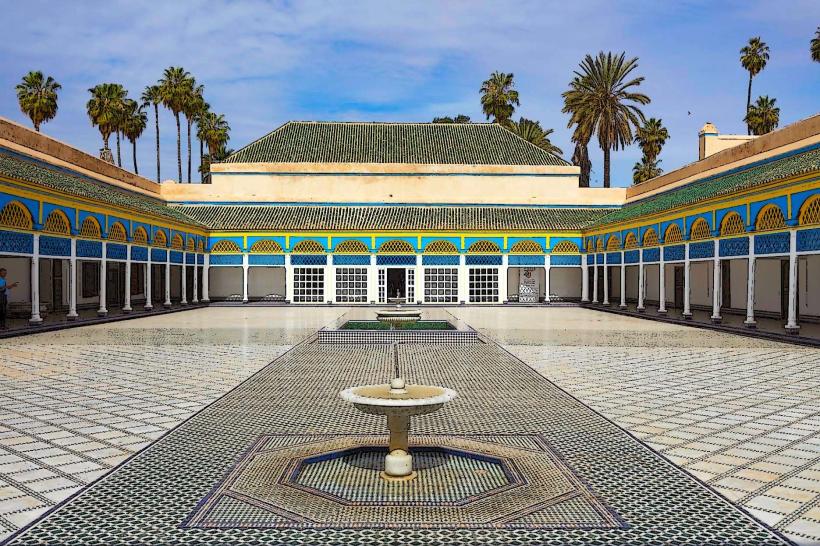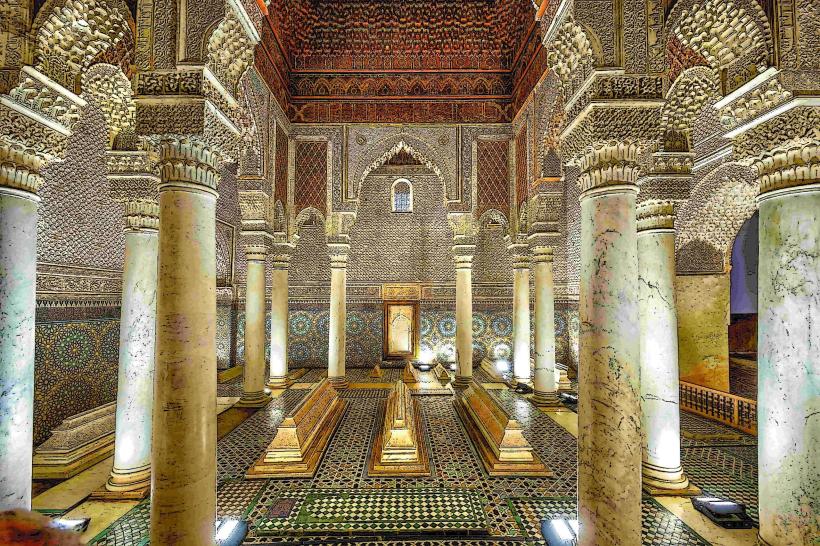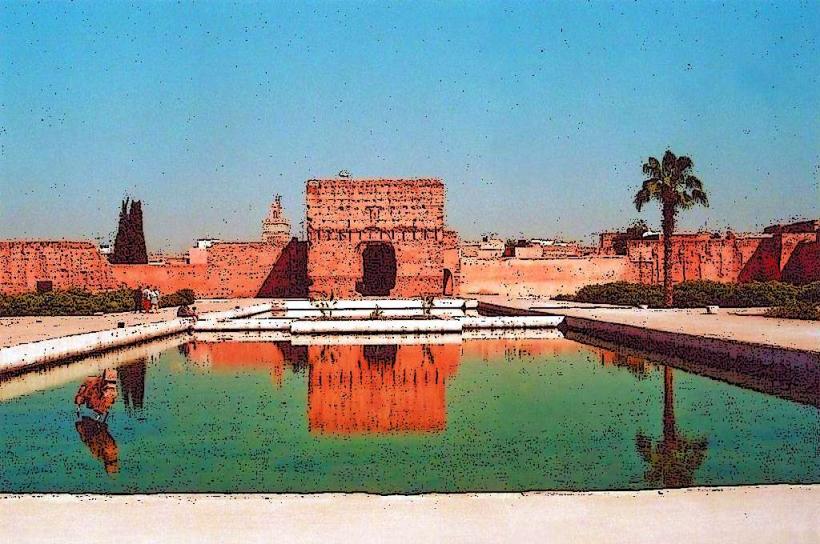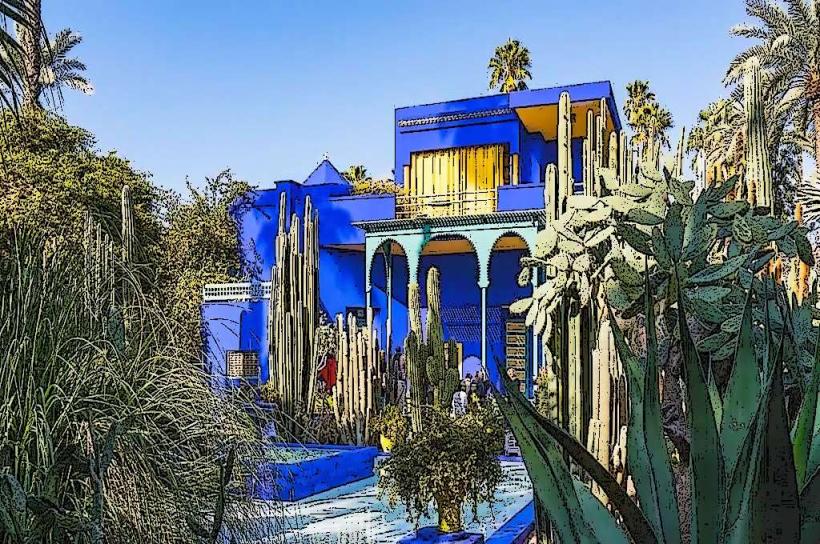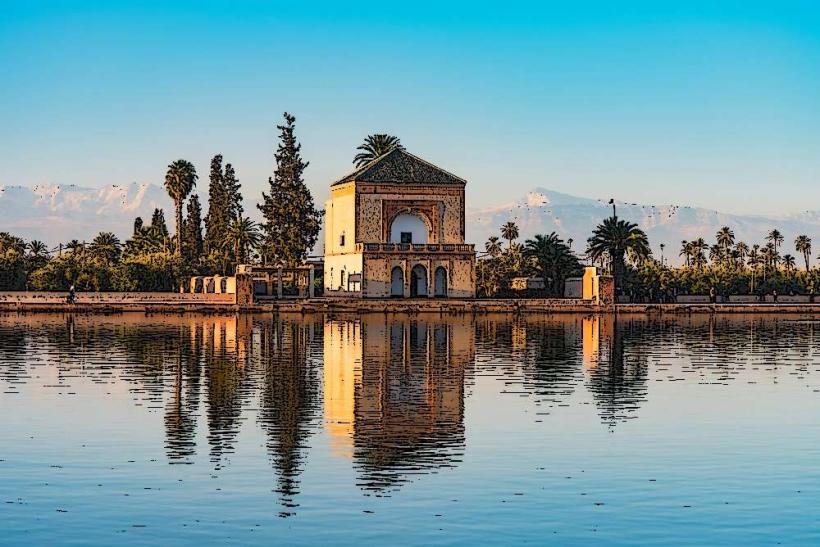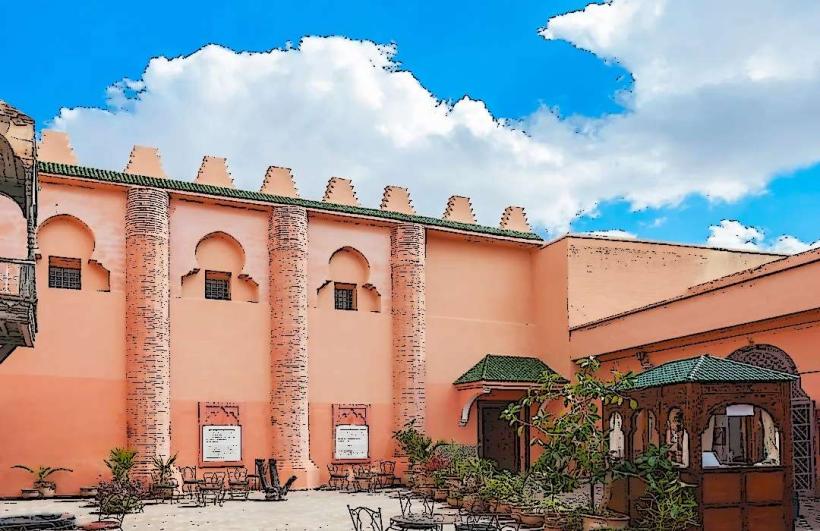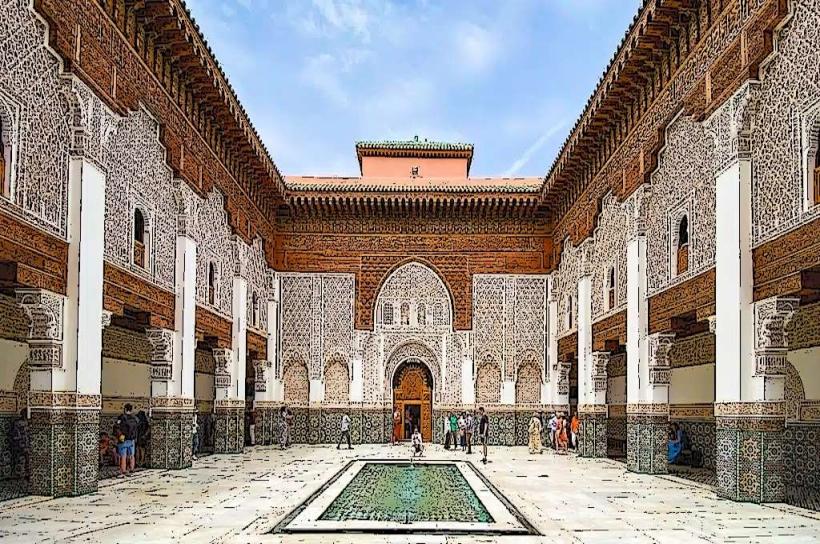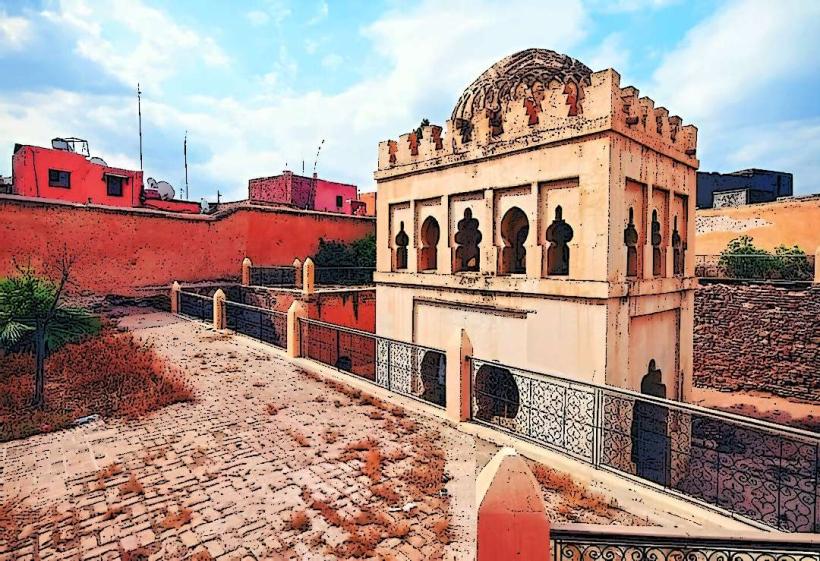Information
Landmark: Koutoubia MosqueCity: Marrakech
Country: Morocco
Continent: Africa
Koutoubia Mosque, Marrakech, Morocco, Africa
Overview
The Koutoubia Mosque-also called Kutubiyya or Kutubiyyin-stands as Marrakech’s largest mosque, its sandstone minaret glowing in the Moroccan sun and marking one of the nation’s most famous landmarks, moreover the towering minaret rises above the Medina’s rooftops, its shadow stretching across narrow alleys, shaping the city’s spirit and its distinctive architecture.The mosque isn’t just for worship-it stands as a striking emblem of Almohad design, Islamic learning, and the bustling street life of North African cities, in conjunction with the Koutoubia Mosque stands just southwest of Jemaa el-Fnaa, the bustling square at the heart of Marrakech’s Medina, where the air smells faintly of spices and grilled meat, generally It stands at the meeting point of busy streets and worn stone walkways, firmly marking the heart of the city’s historic quarter, equally important rising nearly 77 meters, its minaret catches the eye from miles away, a familiar landmark locals and visitors use to find their way through the winding streets of the Medina.It appears, The Koutoubia Mosque, as it stands today, was built in the 12th century by the Almohad dynasty, under Caliph Abd al-Mu’min, after they seized Marrakech from the Almoravids, what’s more the name Koutoubia comes from the Arabic word *kutubiyyin*, meaning “booksellers,” a nod to the bustling rows of book stalls and manuscript vendors that once circled the mosque, highlighting Marrakech’s long history as a hub of learning.The Almohads once built two mosques side by side; the first, off by a few degrees from Mecca, was torn down and replaced by the second-the one still standing under the warm sun today, simultaneously you can still spot parts of the aged mosque’s foundations, weathered stone edges peeking through the ground.Honestly, The mosque’s standout feature is its minaret, soaring nearly 77 meters high with a slender spire that catches the light at sunset, also built from warm sandstone, it’s adorned with carved motifs, arched windows, and a striking profile crowned with merlons.Four copper orbs crown the top, glinting in the light-said to symbolize the moon’s shifting phases or a gift of penance from a sultan’s wife long ago, while it became the model for other renowned minarets, including Seville’s Giralda and Rabat’s Hassan Tower, rising like pale stone sentinels against the sky, in some ways The prayer hall holds seventeen aisles, their space framed by sturdy horseshoe arches-an unmistakable feature of Maghrebi Islamic design, warm in the glow of afternoon light, equally important the hypostyle design creates a balanced symmetry, with arches repeating in a steady rhythm like footsteps echoing down a stone hall.The qibla wall faces Mecca and holds a mihrab, a prayer niche dressed in intricate stucco and cool, glazed tiles, at the same time materials: Built from red sandstone, the structure glows with the warm, dusty hue that defines Marrakech’s streets.Traditionally, interiors featured warm woodwork, delicate stucco carvings, and the intricate geometric patterns of zellij tile, simultaneously religious and Cultural Importance: The mosque still hums with daily prayers and stands at the heart of Marrakech’s spiritual life, slightly Non-Muslims can’t enter, following Moroccan tradition that keeps the doors shut, while friday prayers matter most on this day, when worshippers pack the mosque and overflow into the gardens, their sandals lined neatly along the walkways.You know, Call to Prayer: Five times a day, the adhan rises from the minaret’s speakers, its echo carrying through narrow streets and reminding everyone that the mosque stands at the city’s spiritual heart, therefore wrapped around the mosque, the Koutoubia Gardens-also known as Lalla Hasna Park-offer quiet, orderly grounds where roses bloom beside orange and palm trees, and shaded paths lead to the sound of trickling fountains.Truthfully, For Marrakchis, these gardens are both a peaceful retreat and a site to gather, where you can catch sight of the minaret rising above the rooftops and leave the Medina’s clamor behind, alternatively urban Influence: The mosque, with its slender minaret, was placed with care, following Almohad urban design, so its presence flowed naturally into the rhythm of public life around places like the bustling Jemaa el-Fnaa.The Koutoubia’s minaret set the standard for minaret design across the Western Islamic world, shaping the skyline of Andalusia and Morocco with its tall, rose-colored stone tower, also spiritual Beacon: It stands as a clear emblem of Islamic orthodoxy and Almohad reform, echoing their push to restore what they believed was a truer, simpler Islam, like the crisp call to prayer ringing through a quiet courtyard.Cultural Legacy: The mosque has sparked novels, verses, and vivid paintings, capturing Marrakech’s enduring spirit and quiet devotion, while over the centuries, craftsmen have restored the mosque many times, working carefully to protect its warm sandstone and the intricate carvings that catch light like fine lace.UNESCO World Heritage Site: The mosque isn’t listed on its own, but it stands within Marrakech’s UNESCO-recognized Medina, a maze of narrow streets and vivid market stalls that mark its global cultural importance, in addition the minaret rises above the Marrakech skyline, catching the eye most when the sunset paints it gold or dawn bathes it in soft pink light.Auditory Landscape: The call to prayer drifts from the minaret, its echo rolling across rooftops, setting the day’s pace and deepening the mosque’s sense of reverence, what’s more the open courtyard around the mosque hosts gatherings, quiet moments of rest, and reflection, making it not just a destination of worship but a cornerstone of community life.The Koutoubia Mosque isn’t just an architectural marvel-it’s the beating heart of Marrakech, its call to prayer echoing through centuries of Islamic and Maghrebi history, therefore with its minaret rising like a pale stone needle, graceful symmetry, and destination at the heart of the city’s worship, it stands among the finest examples of Islamic architecture in North Africa.
Author: Tourist Landmarks
Date: 2025-09-26

